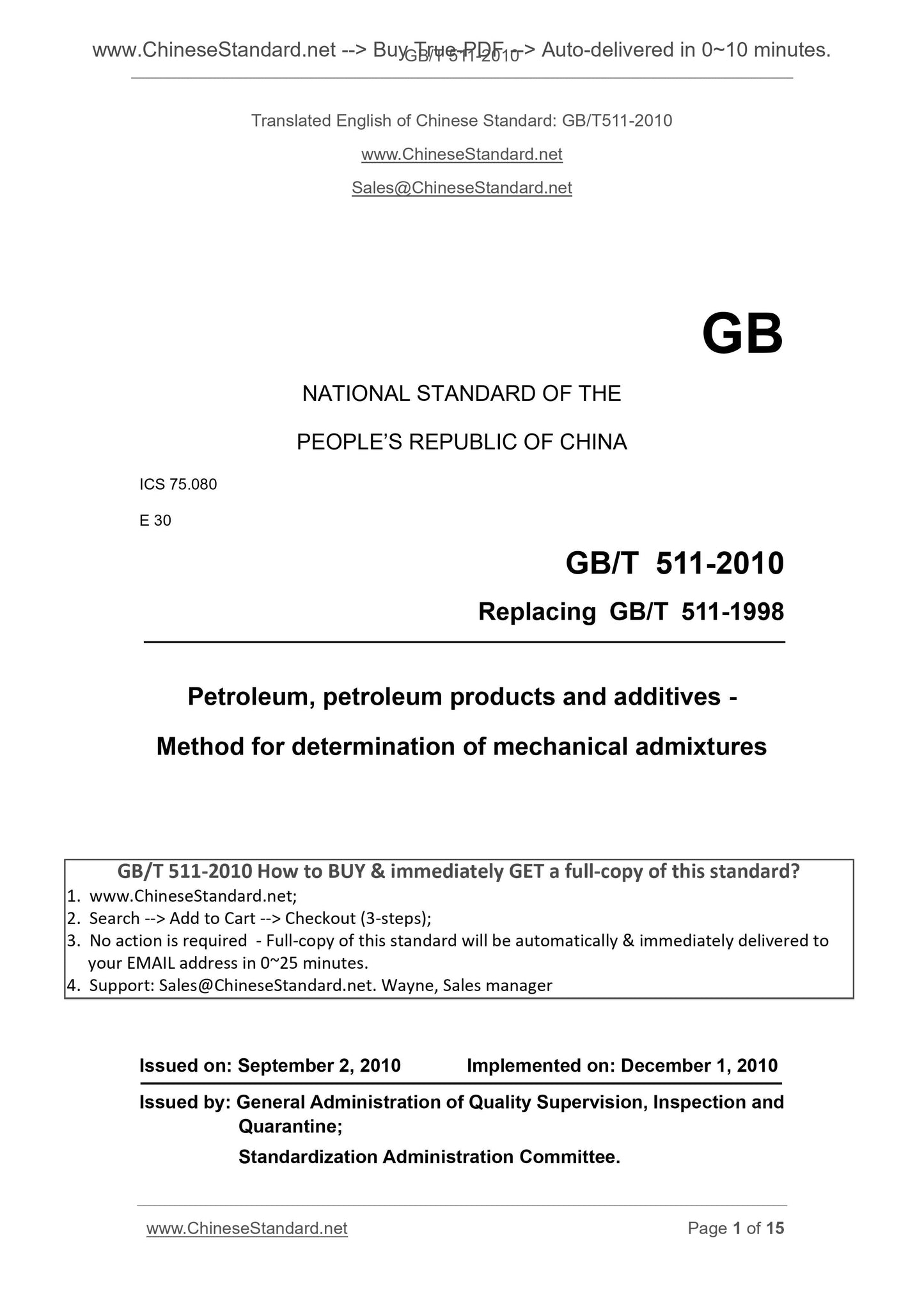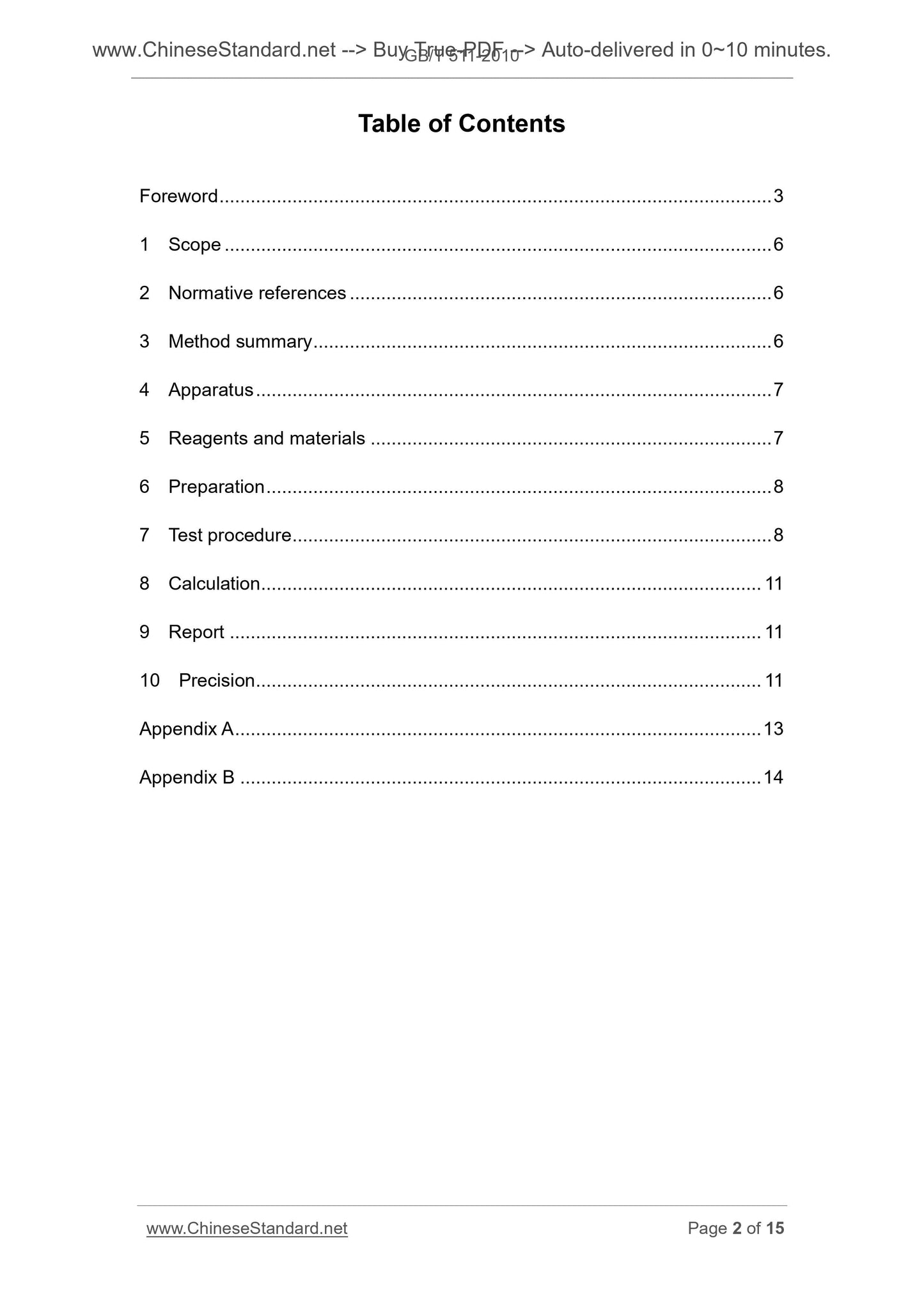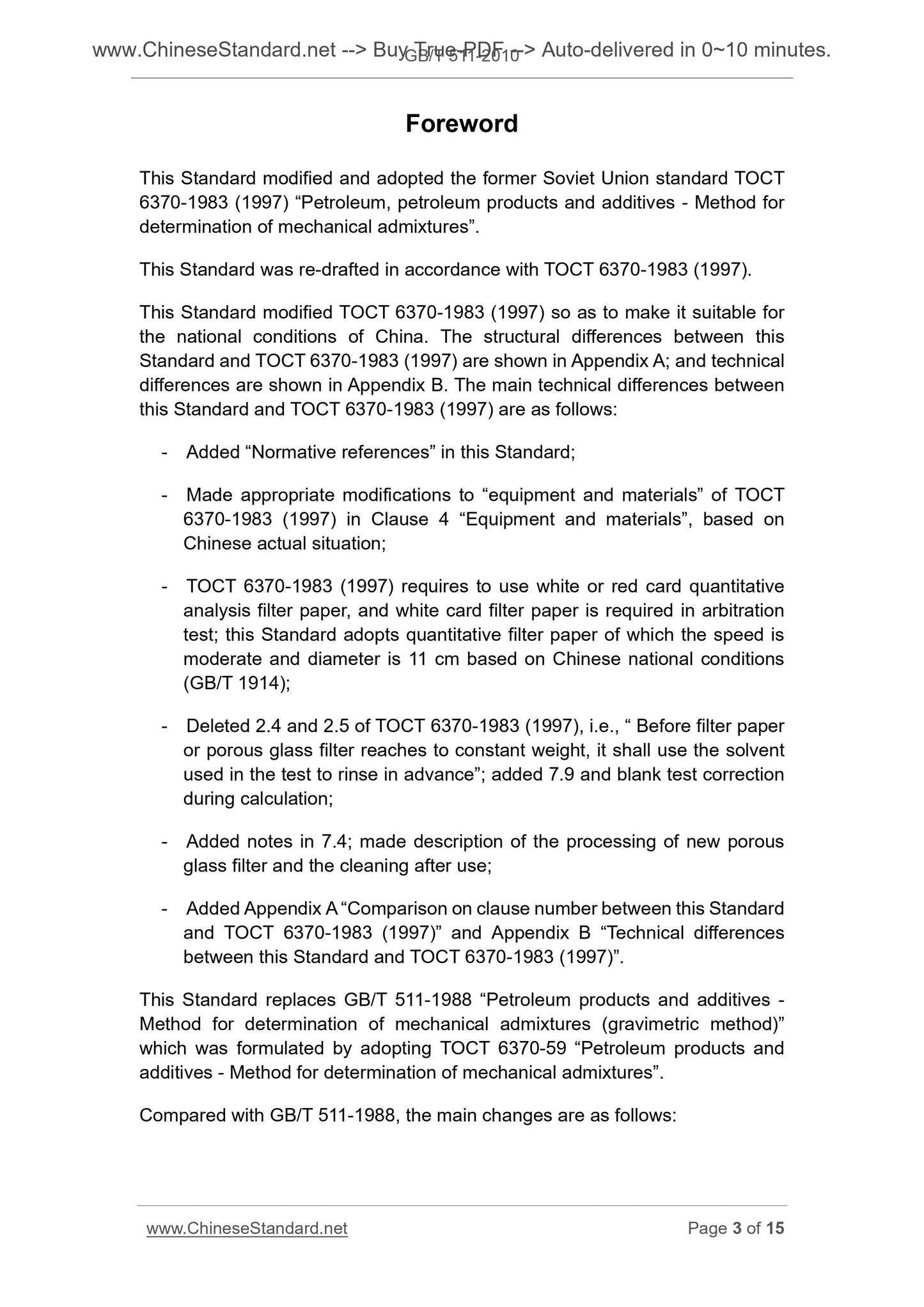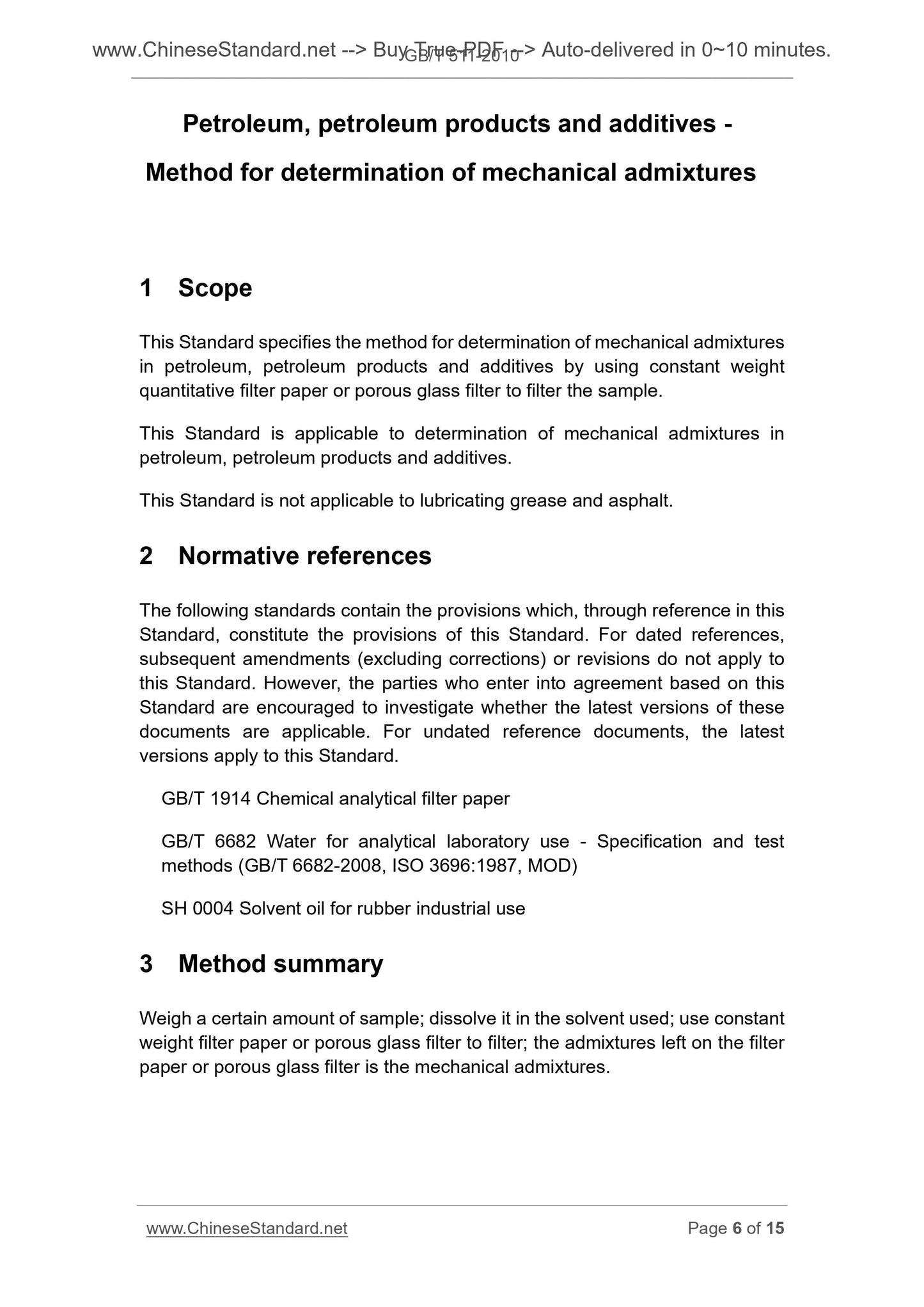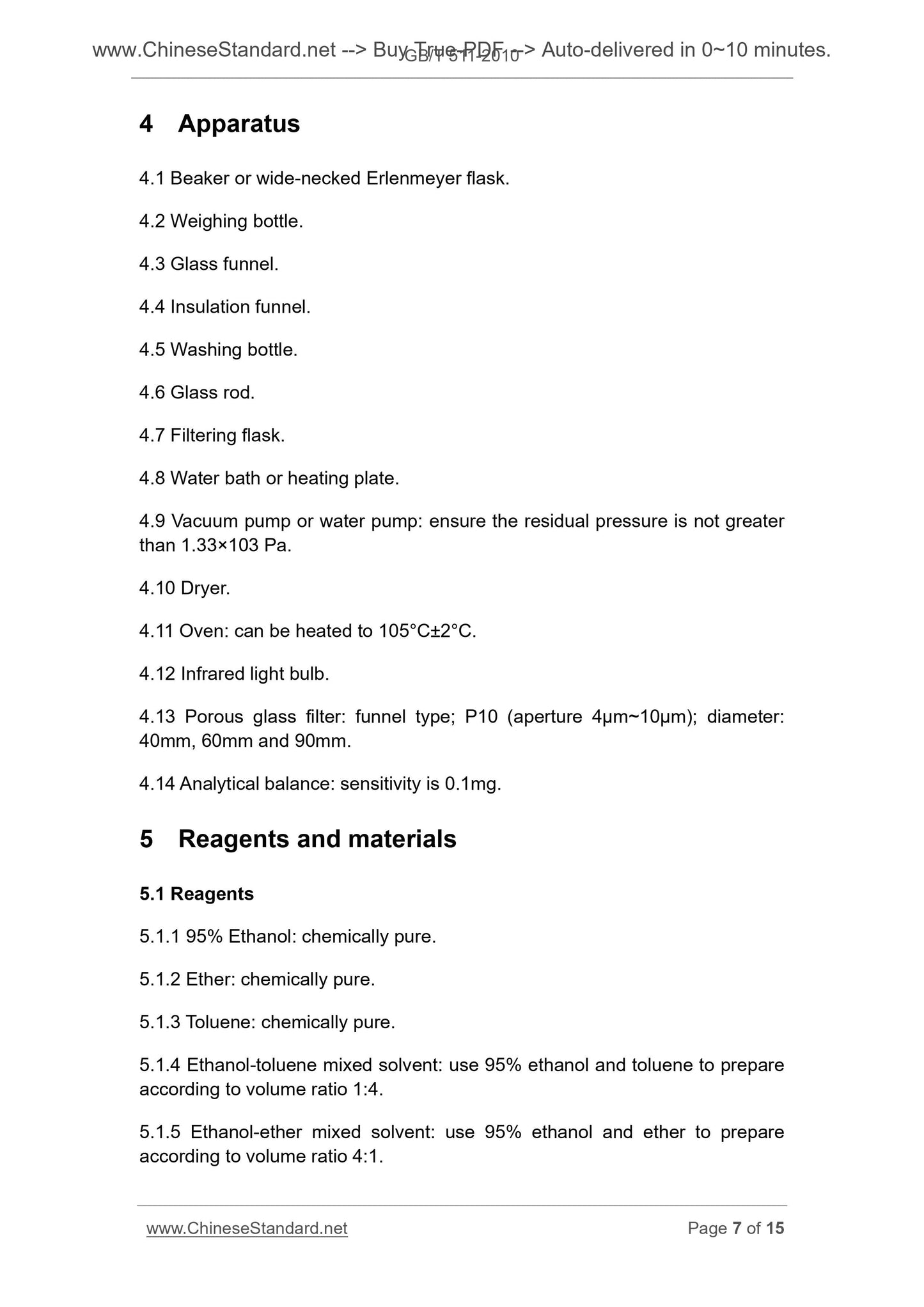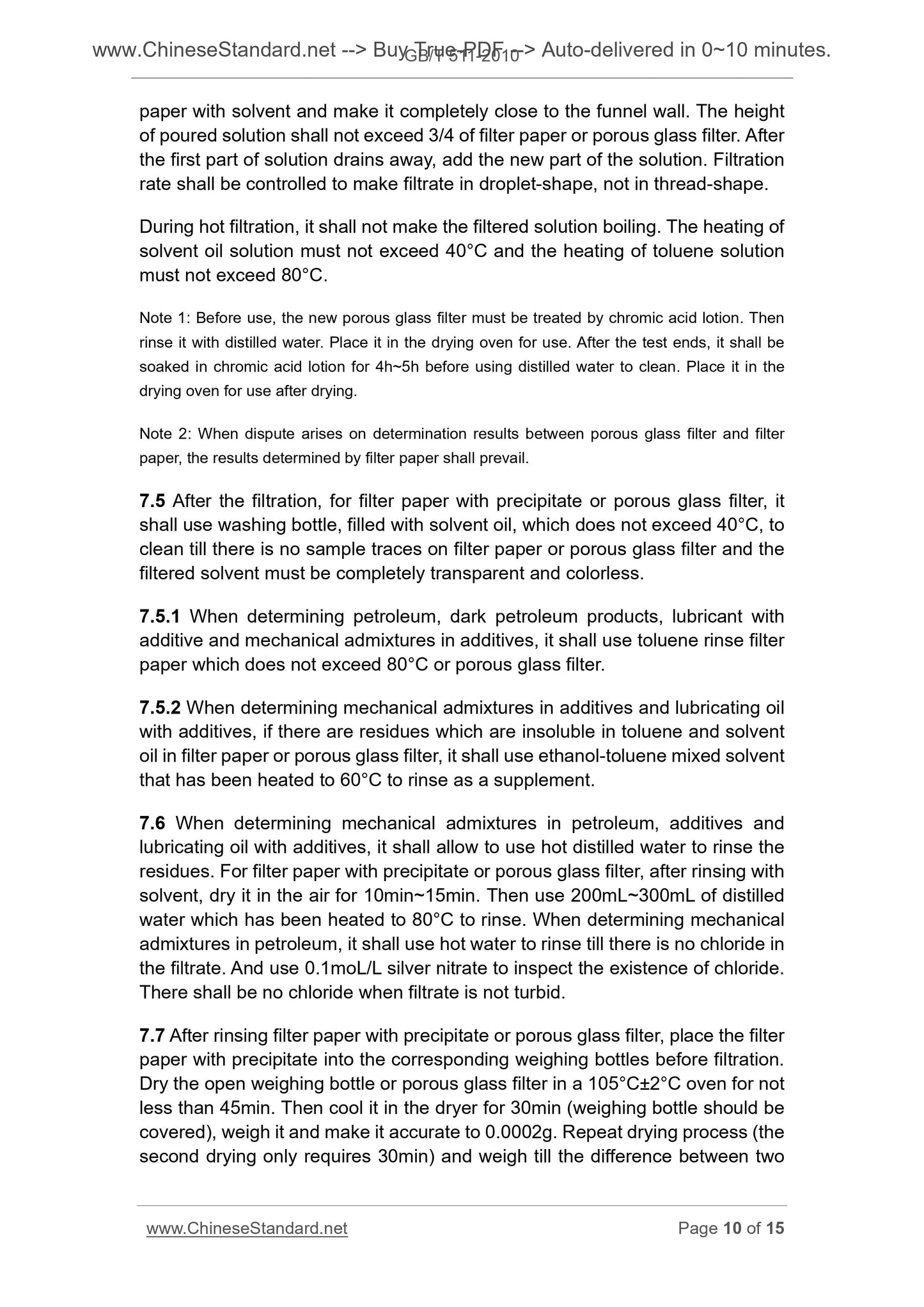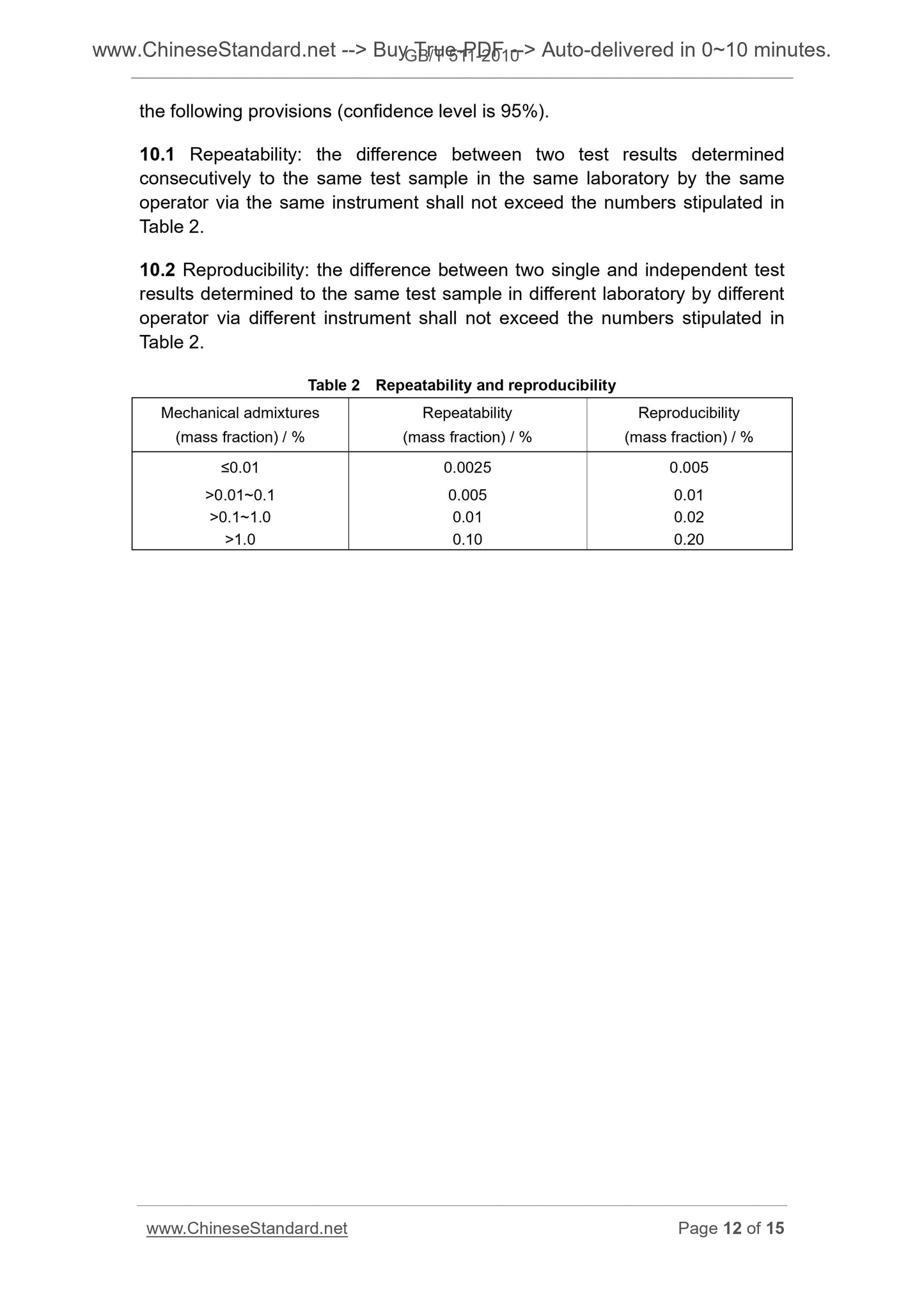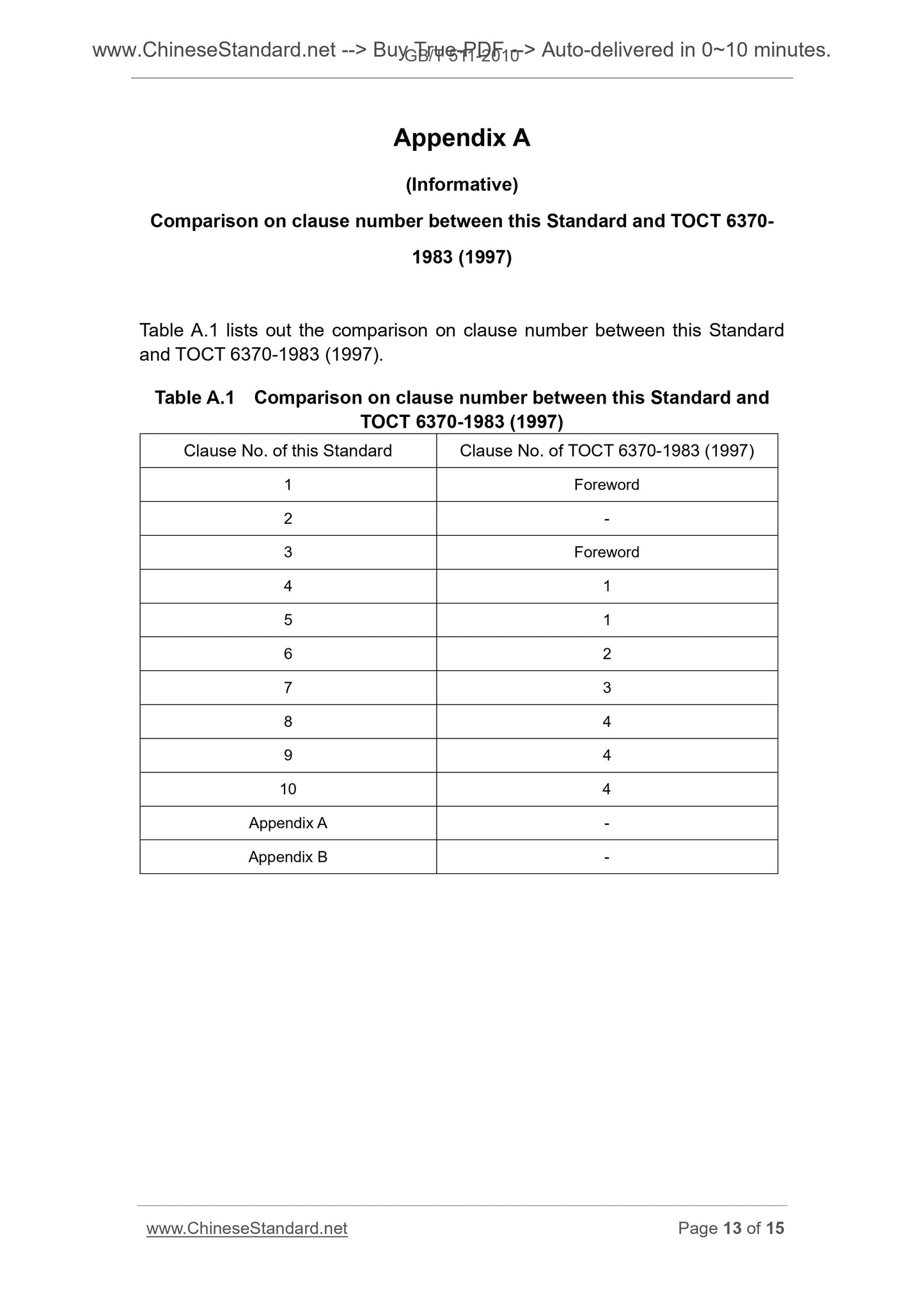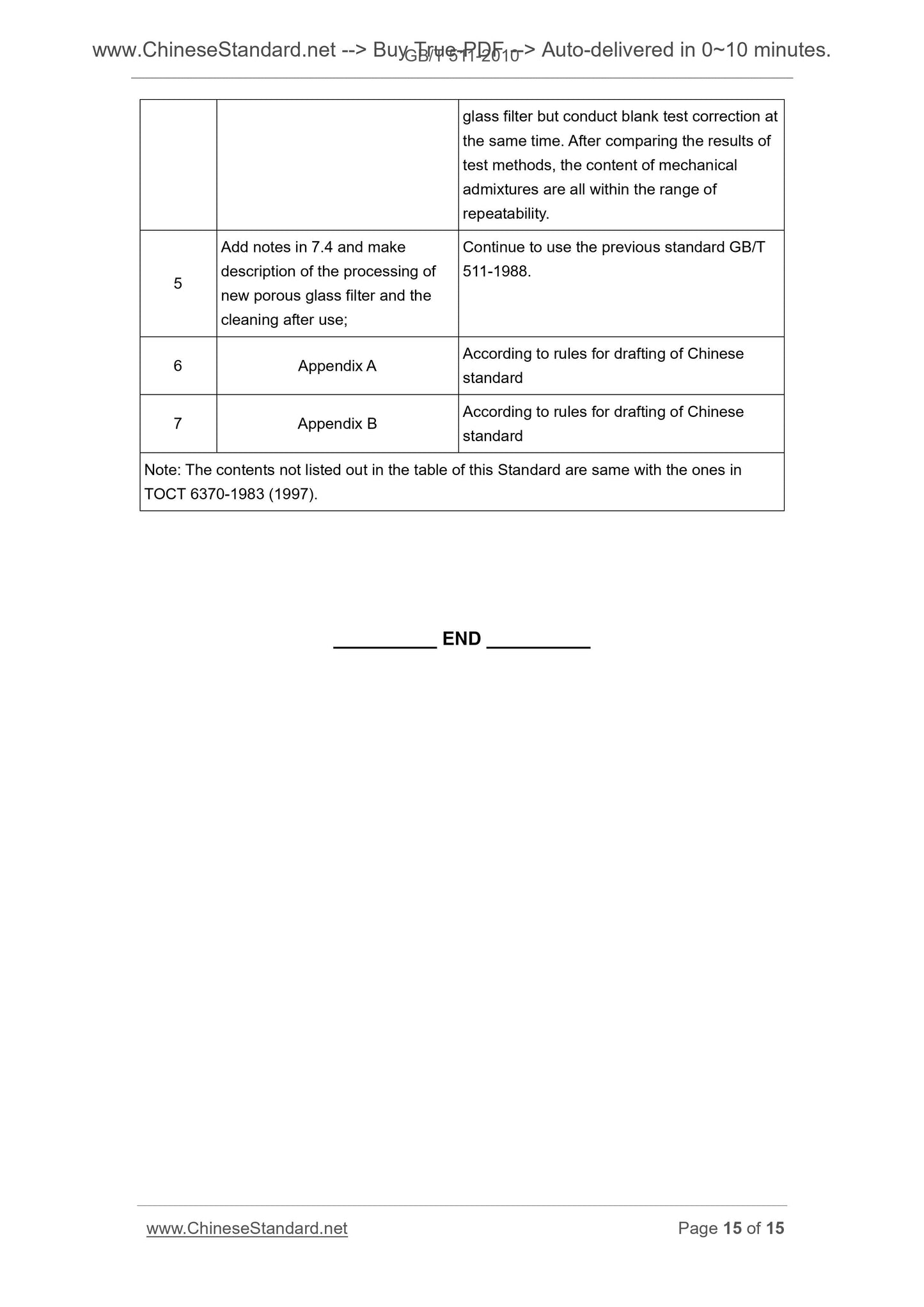1
/
of
9
www.ChineseStandard.us -- Field Test Asia Pte. Ltd.
GB/T 511-2010 English PDF (GB/T511-2010)
GB/T 511-2010 English PDF (GB/T511-2010)
Regular price
$85.00
Regular price
Sale price
$85.00
Unit price
/
per
Shipping calculated at checkout.
Couldn't load pickup availability
GB/T 511-2010: Petroleum, petroleum products and additives -- Method for determination of mechanical admixtures
Delivery: 9 seconds. Download (and Email) true-PDF + Invoice.Get Quotation: Click GB/T 511-2010 (Self-service in 1-minute)
Newer / historical versions: GB/T 511-2010
Preview True-PDF
Scope
This Standard specifies the method for determination of mechanical admixturesin petroleum, petroleum products and additives by using constant weight
quantitative filter paper or porous glass filter to filter the sample.
This Standard is applicable to determination of mechanical admixtures in
petroleum, petroleum products and additives.
This Standard is not applicable to lubricating grease and asphalt.
Basic Data
| Standard ID | GB/T 511-2010 (GB/T511-2010) |
| Description (Translated English) | Petroleum, petroleum products and additives -- Method for determination of mechanical admixtures |
| Sector / Industry | National Standard (Recommended) |
| Classification of Chinese Standard | E30 |
| Classification of International Standard | 75.080 |
| Word Count Estimation | 9,996 |
| Date of Issue | 2010-09-02 |
| Date of Implementation | 2010-12-01 |
| Older Standard (superseded by this standard) | GB/T 511-1988 |
| Quoted Standard | GB/T 1914; GB/T 6682; SH 0004 |
| Adopted Standard | ��OCT 6370-1983 (1997), MOD |
| Regulation (derived from) | National Standard Approval Announcement 2010 No.4 (Total No.159) |
| Issuing agency(ies) | General Administration of Quality Supervision, Inspection and Quarantine of the People's Republic of China, Standardization Administration of the People's Republic of China |
| Summary | This standard specifies the method of constant weight quantitative filter paper or porous glass filter samples to determine petroleum and petroleum products and additives mechanical impurities. This standard applies to the determination of the oil, liquid petroleum products and additives mechanical impurities. This standard does not apply greases and bitumen. |
Share
